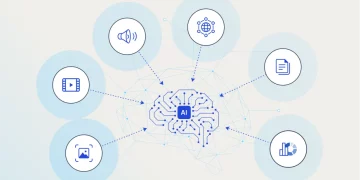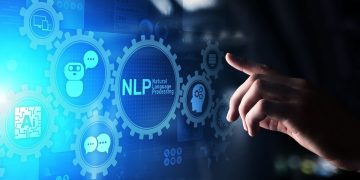Artificial Intelligence (AI) has rapidly evolved from a cutting-edge concept to a practical tool for businesses, individuals, and organizations across various industries. However, with the growing number of AI tools available today, choosing the right platform or tool to suit your specific needs can be overwhelming. Whether you’re looking to integrate AI into your business operations, improve decision-making, or enhance customer experience, the right AI tool can significantly impact your success.
In this article, we’ll explore how to choose AI tools that align with your goals, along with expert recommendations on the best platforms available today for various applications.
1. Understand Your AI Needs and Objectives
The first step in selecting the right AI tool is to clearly define your needs and objectives. AI tools can serve various purposes, such as automating processes, improving data analysis, providing predictive insights, enhancing customer interactions, or optimizing resource management.
Here’s how you can break down your AI requirements:
1.1 Identify Specific Use Cases
- Automation: Are you looking to automate tasks like data entry, customer support, or content generation?
- Data Analytics: Do you need AI to process large datasets and uncover patterns, trends, or predictions?
- Customer Support: Are you aiming to implement AI chatbots, virtual assistants, or other customer-facing applications?
- Personalization: Do you want AI to personalize content or product recommendations for users or customers?
- Predictive Analytics: Are you focused on using AI to forecast trends, optimize supply chains, or predict outcomes?
1.2 Determine Your Budget
AI tools vary widely in terms of cost. Some platforms are cloud-based and offer subscription models, while others may require significant upfront investments in software and hardware. Consider how much you are willing to invest based on the scale and potential return on investment (ROI) of implementing AI.
1.3 Assess Your Technical Expertise
Some AI tools require specialized knowledge in programming, data science, or machine learning, while others are designed for non-technical users with intuitive interfaces. Understanding your team’s technical capacity and choosing a tool that matches your expertise will be critical for effective implementation.
2. Key Features to Look for in AI Tools
2.1 Ease of Use and Integration
AI tools should ideally integrate seamlessly with your existing systems and processes. Some platforms offer pre-built integrations with popular software like CRM systems, databases, and cloud storage, which can save time and reduce complexity.
- Intuitive UI: Look for platforms with user-friendly interfaces that allow non-technical users to operate them efficiently.
- Pre-Built Models: Many platforms offer pre-trained models, allowing you to deploy AI without needing to develop everything from scratch.
2.2 Scalability
As your business grows, you will need an AI tool that can scale with you. Ensure that the platform you select can handle increasing data loads, more complex tasks, or expanding team collaboration.
- Cloud-Based Solutions: Many AI tools are cloud-based, which allows them to scale easily without requiring major infrastructure changes.
- Customizability: Check whether the platform allows for customization and fine-tuning to suit your specific needs.
2.3 Data Privacy and Security
When working with AI, you will likely be handling sensitive customer data, proprietary business information, or intellectual property. Ensure the AI tool follows best practices in data privacy and cybersecurity.
- Data Encryption: Look for platforms that offer encryption for both data at rest and in transit.
- GDPR Compliance: If you operate in Europe or deal with European customers, ensure the platform complies with GDPR regulations.
3. Expert-Recommended AI Platforms for Different Use Cases
Now that you understand your needs and the key features to look for, here are some of the best AI platforms recommended by experts for various applications:
3.1 AI for Business Automation and Workflow Optimization
UiPath
UiPath is a leader in robotic process automation (RPA), helping businesses automate repetitive tasks across multiple applications. With AI-driven workflows, UiPath helps improve efficiency and reduce human error.
- Best for: Automating business processes, handling data entry, invoice processing, and customer support automation.
- Why choose it: UiPath is highly scalable, has a user-friendly interface, and integrates with a wide variety of third-party systems.
Automation Anywhere
Another key player in the RPA space, Automation Anywhere offers a cloud-native, AI-driven automation platform that supports tasks ranging from document processing to workflow management.
- Best for: Automating repetitive tasks across departments like finance, HR, and IT operations.
- Why choose it: It uses AI for smart decision-making and is ideal for businesses looking for intelligent automation solutions.
3.2 AI for Data Analytics and Machine Learning
Google Cloud AI Platform
Google Cloud’s AI platform provides a comprehensive suite of tools for building, training, and deploying machine learning models. It supports deep learning, natural language processing, and data analysis, with integrations to Google’s BigQuery and other cloud services.
- Best for: Advanced data analytics, building custom machine learning models, and running large-scale AI experiments.
- Why choose it: Google Cloud offers powerful tools and is ideal for companies that require scalability, especially with large datasets.
IBM Watson Studio
IBM Watson Studio is a data science and machine learning platform that allows teams to collaborate on developing and deploying AI models. It integrates various data sources and AI capabilities, making it suitable for businesses focused on deep learning, predictive analytics, and business intelligence.
- Best for: Developing custom AI solutions for data analytics, business intelligence, and predictive analytics.
- Why choose it: IBM Watson is known for its extensive tools and resources, including Watson Assistant for chatbots and Watson Machine Learning for model deployment.

3.3 AI for Customer Support and Virtual Assistants
Zendesk + AI (Answer Bot)
Zendesk provides a customer service platform with AI-powered tools for automating support ticket management, improving response times, and offering AI-driven chatbots that can assist customers in real-time.
- Best for: Automating customer support interactions and improving help desk efficiency.
- Why choose it: It integrates seamlessly with your existing customer support operations, offering tools for both human agents and AI chatbots.
LivePerson
LivePerson is an AI-powered messaging platform designed for customer engagement. It uses natural language processing (NLP) to understand customer inquiries and provide intelligent responses.
- Best for: Delivering real-time customer service, managing conversations across multiple messaging channels (SMS, WhatsApp, etc.), and creating AI-powered virtual assistants.
- Why choose it: LivePerson excels at providing seamless and context-aware customer interactions through AI-driven chatbots and messaging tools.
3.4 AI for Marketing and Personalization
HubSpot
HubSpot’s AI tools are geared towards improving marketing automation, lead generation, and customer relationship management. Its AI-driven marketing platform can personalize email campaigns, optimize landing pages, and segment customer data for better targeting.
- Best for: Marketing automation, personalized customer interactions, and lead nurturing.
- Why choose it: HubSpot’s AI tools are particularly user-friendly, allowing businesses to easily tailor marketing strategies without requiring deep technical expertise.
Dynamic Yield
Dynamic Yield’s AI-powered personalization platform offers tailored content, recommendations, and user experiences across websites, apps, and email campaigns. It uses machine learning to drive conversions by optimizing user journeys.
- Best for: Personalizing content and product recommendations across digital platforms.
- Why choose it: It’s ideal for eCommerce businesses looking to improve customer engagement and boost conversion rates using AI-driven insights.
4. Final Tips for Choosing the Right AI Tool
- Start Small: If you’re new to AI, begin by using a tool with easy-to-use interfaces and pre-built models. Start with small projects, test the results, and scale as you learn.
- Seek Vendor Support: Choose vendors that offer comprehensive customer support, including training resources, documentation, and access to experts.
- Trial and Testing: Many platforms offer free trials or demos. Take advantage of these to test the platform’s suitability for your needs before committing to a full purchase.
- Stay Updated: AI is a rapidly evolving field, so ensure that the platform you choose is constantly updated with new features, security patches, and advancements in technology.
Conclusion
Choosing the right AI tool for your needs involves understanding your objectives, selecting a platform that matches your technical expertise, and considering the scalability and security of the solution. With the right AI tools, you can automate processes, improve data-driven decision-making, personalize customer interactions, and drive innovation.
By taking into account expert recommendations and exploring the best platforms available for various use cases, you’ll be well-positioned to leverage AI to its full potential. Whether you’re in business automation, marketing, customer support, or data analytics, the right AI platform can unlock new opportunities for growth and efficiency.











































